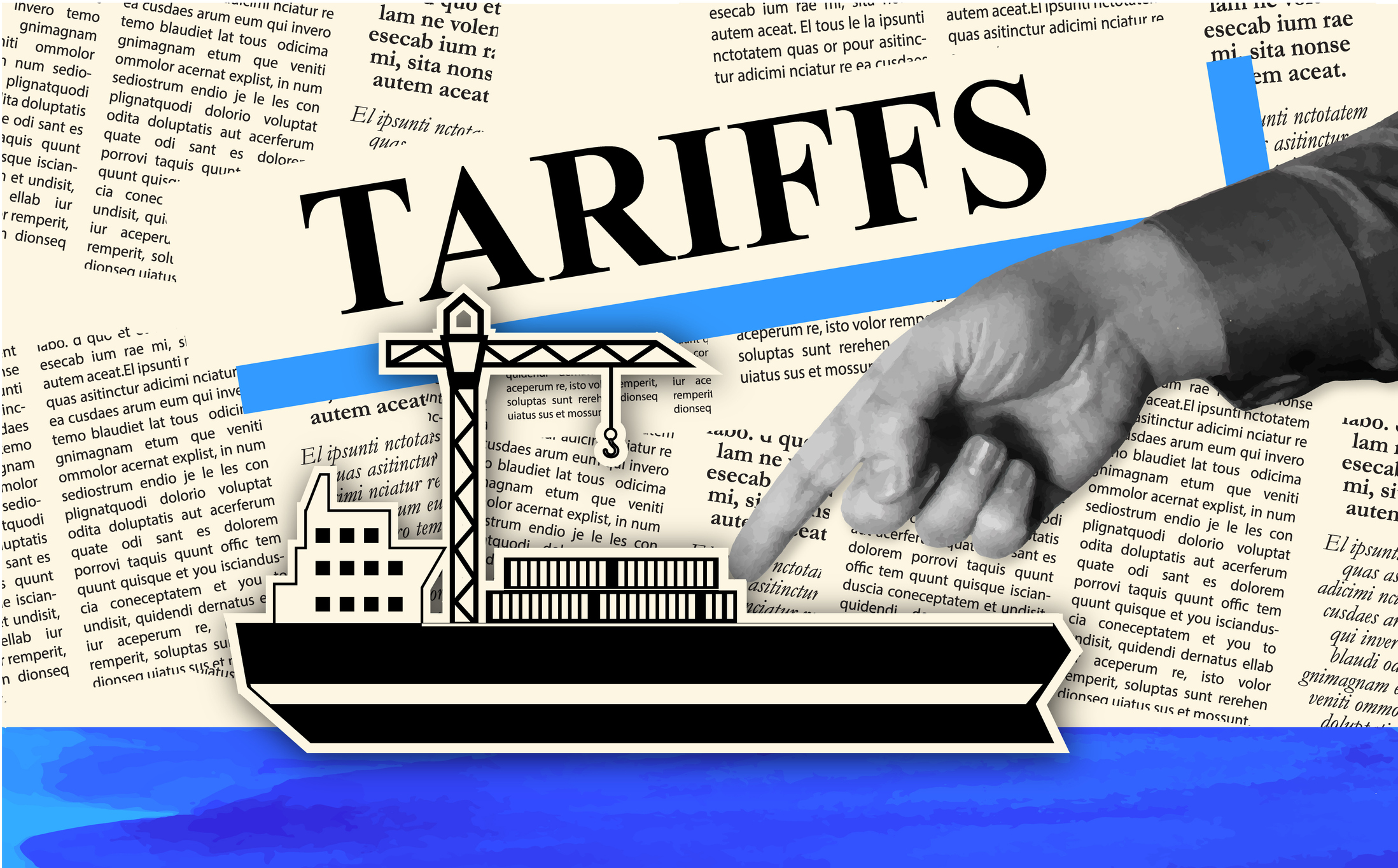In 2025, one question keeps surfacing in boardrooms, grocery store aisles, and central bank meetings: are tariffs fueling inflation? As nations around the world double down on protectionist policies, a growing body of evidence suggests that trade wars may be doing more than disrupting supply chains—they’re making everyday life costlier.
Tariffs, often introduced as economic defense mechanisms, are taxes on imported goods. While intended to protect domestic industries, they frequently result in higher costs for producers, retailers, and ultimately, consumers. In the latest wave of global tariff escalations—particularly between the United States and China—the ripple effects have extended across industries, from smartphones and vehicles to groceries and home appliances.
This blog dives into the inflationary effects of trade wars. We’ll explore how tariffs impact consumer prices, examine the evidence from recent years, and look at which industries and households bear the brunt. We’ll also touch on what experts like procurement strategist Mattias Knutsson are advising companies to do in order to protect customers and margins in a world of rising costs.
How Tariffs Work: Simple in Theory, Complicated in Practice
On paper, tariffs are straightforward. A country imposes a duty on imported goods to make them more expensive, encouraging consumers to buy domestic alternatives. But in practice, few modern economies produce everything they consume. Globalized supply chains mean imported parts are embedded in finished goods, and cost increases are often passed down the line.
Take smartphones as an example. Even if assembled in the U.S., many components—chips, display panels, and batteries—come from abroad. A tariff on any of these parts raises the cost of the final product, regardless of where the phone is put together.
Tariffs can also trigger retaliation. If Country A taxes imports from Country B, Country B is likely to respond in kind. This tit-for-tat escalation amplifies costs across multiple sectors.
The Inflation Link: What the Data Shows
Since 2018, the U.S. has imposed hundreds of billions of dollars in tariffs on goods from China and other countries. A study by the Federal Reserve Bank of New York found that the average annual cost to U.S. households from 2018–2019 tariffs was approximately $831 per family. That figure has only increased as tariffs expanded.
In 2025, new tariffs—including a 100% tariff on Chinese electric vehicles, 50% on solar cells, and 25% on semiconductors—are expected to cost U.S. consumers an additional $95 billion annually in higher prices, according to estimates from the Peterson Institute for International Economics.
The Consumer Price Index (CPI) data supports these findings. Goods targeted by tariffs, such as electronics, appliances, and furniture, have seen price increases well above the overall inflation rate. For example:
- Home appliances: Prices rose 11% year-over-year in Q1 2025.
- Consumer electronics: Up 8.2%, driven by increased component costs.
- Grocery items: Indirectly affected, some categories like processed foods rose 6.7%, due to packaging and transportation tariffs.
While global inflationary pressures have many causes—including energy volatility, labor shortages, and geopolitical risks—tariffs are acting as accelerants rather than insulators.
Which Industries Are Hit Hardest?
Some industries are more vulnerable to tariff-induced inflation than others. Here’s a look at sectors currently feeling the most pain.
Technology and Electronics:
With semiconductor tariffs at 25% or higher, and restrictions on Chinese tech firms, costs for laptops, smartphones, and tablets are rising. Supply chains are being rerouted, but substitute suppliers in Taiwan, Vietnam, or India come at a higher cost.
Automotive Sector:
Tariffs on EV batteries and foreign-made parts are pushing up car prices. A mid-range electric vehicle that cost $35,000 in 2023 now averages $39,800 in 2025, partially due to protectionist measures.
Green Technology:
Solar panels, wind turbines, and electric infrastructure are facing both direct tariffs and component scarcities. The Inflation Reduction Act’s benefits are being undermined by rising input prices.
Retail and Consumer Goods:
Many finished goods and their inputs are imported, particularly from Asia. Clothing, toys, and furniture have all seen price hikes between 5% and 12%, depending on the material composition and country of origin.
Small Businesses and Low-Income Households: Collateral Damage
Large corporations often have the resources to adjust their supply chains, absorb some costs, or negotiate volume discounts. Small and medium-sized businesses, however, operate on thinner margins. Tariffs hit them harder, often leading to price hikes or squeezed profits.
For low-income households, the inflationary impact is even more severe. Essentials like food, transportation, and household goods make up a larger share of their budgets. As tariffs push up the cost of living, wage gains fail to keep up, eroding purchasing power.
Government programs like SNAP and school meal subsidies are also affected indirectly, as institutions must pay more for goods and services.
Central Banks, Inflation, and Policy Gridlock
Tariff-induced inflation complicates central banking. The Federal Reserve, for example, must weigh how much of the current price surge is demand-driven versus policy-driven. If tariffs are inflating costs artificially, raising interest rates may not address the core issue—but failing to act risks entrenching inflation expectations.
In 2025, the Fed has maintained a cautious stance, holding interest rates steady at 4.5%, while calling for more targeted fiscal coordination. Yet, trade policy and monetary policy often operate on different timelines, creating friction in coordinated responses.
Global Repercussions: An International Inflation Web
The inflationary impact of trade wars isn’t confined to national borders. Global supply chains mean that when one country imposes tariffs, costs ripple outward. In 2025:
- EU consumers are paying more for U.S. tech products due to reciprocal tariffs.
- Emerging markets in Asia and Africa are seeing higher prices for industrial machinery and solar panels.
- Global shipping costs have risen 9%, with companies rerouting around tariffed ports.
Multinational corporations are warning of long-term structural inflation unless tariff regimes are reconsidered. The World Trade Organization has flagged these developments as a major threat to global economic stability.
Strategic Advice from Mattias Knutsson
In a protectionist and inflationary world, procurement strategy becomes a front-line defense. Mattias Knutsson, a global procurement and supply chain strategist, notes: “Tariffs create volatility that businesses must now anticipate as the norm, not the exception. Sourcing diversification, cost modeling, and resilient supplier relationships are now more important than ever.”
Knutsson emphasizes the importance of forward planning: “Don’t just chase the cheapest supplier. Balance cost with reliability, political stability, and ethical standards. That’s how you protect your business—and your customers—from inflation shocks.”
Conclusion
Tariffs may serve political goals and strategic objectives, but when it comes to inflation, the evidence is clear: trade wars make things more expensive. They act like a tax on consumption, disproportionately impacting small businesses and low-income households while complicating central bank policy.
While targeted tariffs can be a legitimate tool in specific sectors, their broad and prolonged use creates economic headwinds. A smarter approach involves multilateral trade agreements, strategic investment in domestic capabilities, and coordinated policy between fiscal and monetary authorities.
In the words of Mattias Knutsson, “The winners of tomorrow aren’t those who avoid the storm—they’re the ones who built the best ship.” In a world of rising costs and frayed alliances, resilience, adaptability, and strategic foresight will define success.




